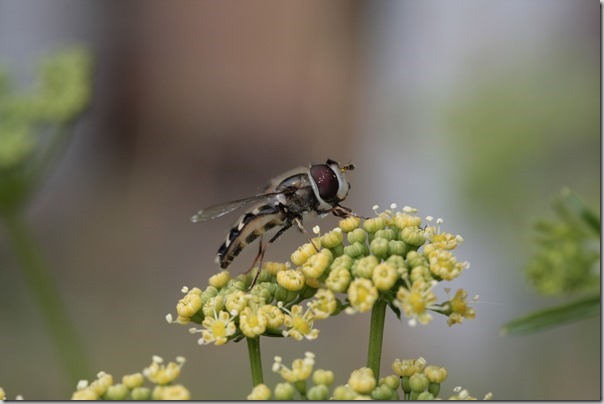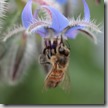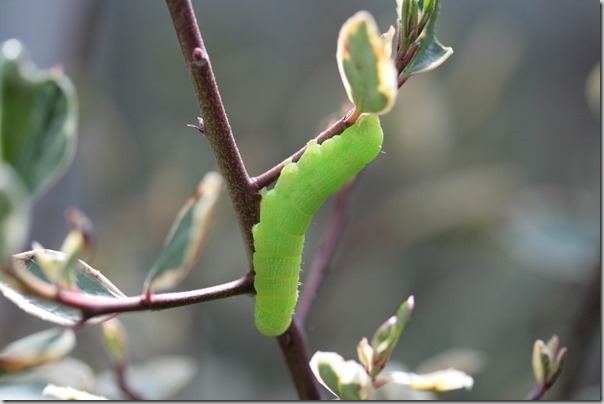
New gardeners, like new parents, tend to be a bit overprotective of their charges. It doesn’t matter whether we’re talking a fancy new shrub from the garden store, or our firstborn little darling – too much hovering can lead to, well, not-so-great results. There’s a new parenting trend floating around the internet called “Calm the F*** Down“, which is exactly as it sounds. The idea being that a playful spirit and another martini might just lead to better kids then a stressed-out ‘tude and a stack of the latest parenting books.
As a new mom, I can’t say I’ve necessarily embraced CTFD in my own parenting style, but I certainly see its merits in the garden, especially when it comes to spraying. I get questions all the time from readers wondering what product to buy to kill whatever ick is covering their beloved plant. They’re usually deeply unsatisfied when I give my answer, which is to transplant that delicate beauty right into the compost bin. If I sense a heightened level of emotion around the subject, I further recommend doing a meditation or some good old-fashioned retail therapy at the nursery. In other words, CTFD, people.
We’ve been led to think by overactive marketing departments that every pest has its spray, and that selecting the right array of bottles and accoutrements will lead to gardening success. If we are relying on potions and sprays, we’re covering up a greater problem in our approach. It’s a little like the beauty industry suggesting that the latest $50 face cream will do more for our looks than vegetables and eight glasses of water a day. When given good care, plants should be able to live in harmony with their neighbors without pest problems or excessive fussing.
 What’s the harm in a bit of organic spray? Well, in the wrong hands, many organic sprays are harmful to honeybees, beneficial insects (who prey on aphids and other garden nasties and keep them in balance), and caterpillars, which if you haven’t noticed, often turn into the very butterflies we claim to want to attract.
What’s the harm in a bit of organic spray? Well, in the wrong hands, many organic sprays are harmful to honeybees, beneficial insects (who prey on aphids and other garden nasties and keep them in balance), and caterpillars, which if you haven’t noticed, often turn into the very butterflies we claim to want to attract.
But what’s worse is the spirit with which we engage in all of this chemical warfare. It’s as though we have a deep-seated need to control the wilderness just outside our front door, despite the fact that it’s already been so thoroughly tamed that very few species grow there beyond what we personally have planted. Giving a little back, by feeding the soil with compost, nurturing the wildlife we find (yes, even the six-legged kind), and planting some of the native plants that thrived in that soil before we developed it, is a much friendlier approach and leads to a true connection not only with our own gardens, but with the natural world.
So what’s a gardener to do? A little knowledge goes a long way:
Geek out on insects. Before you even think about spraying, take the time to identify the disease or bug in question and figure out whether it’s even a problem. While we don’t think of them this way, insects actually form the base of our food chain, and if we take a kill-first-think-later approach, birds and hummingbirds won’t be able to find enough food to survive and procreate. Humboldt local Peter Haggard has a wonderful book out called Insects of the Pacific Northwest, which when paired with a pest and disease manual from the garden store, gives you the tools you need to figure out whether you’ve got an infestation of the nasties, or a predatory beetle who actually eats snails and slugs.

Yeah, so he ate a few leaves. Pretty sure the plant will grow more.
Get to the root of the problem. Though sometimes we just get unlucky, usually plants are most susceptible to disease when they are already struggling. Is your sun-loving Viburnum in the shade? Have you used too much of that Blue Miracle fertilizer, which causes foliage to grow so soft and tender that it’s just begging for a bug to eat it? Or did a ginormous flower and an alluring fragrance sucker you into buying some overbred weakling at the nursery? Compost, mulch, and the right plant in the right place will go further to ensure a healthy garden than a whole cabinet full of bottles and promises.
Skip the wussy plants. Don’t impulse-buy roses, fuchsias, hostas, or anything with a flower bigger than your fist unless you plan on sticking it in a pot right by your front door and enjoying the hell out of it until it either dies or goes downhill. If your credit card’s feeling twitchy, start your impulse buying in the native plant or the edible section, where no matter what you buy, you can rest easy knowing that you’ve either fed yourself or fed some of our local wildlife.
Have you embraced CTFD in your own garden? Let me know in the comments below.
EDIT June 30: I’m very sorry to those who have left comments in the last couple days – I switched hosts, and in the process lost some data and some of your clever and fun comments. 🙁 I think everything is cleared up now moving forward.
5 responses to “Tired of Spraying? You Might Just Need a Dose of CTFD”
Hi Genevieve, I love your CTFD approach to parenting and gardening! As a retired teacher, I encountered too much interference by parents who were often misguided. I’m sure they meant well, but they couldn’t always see the big picture. So as gardeners, we need to let nature take its course.
Gen, this post made me laugh out loud. Over the years, I’ve been fond of saying I’m just a lazy gardener because I don’t spray anything. I’m not really lazy, but I prefer to put the work in up front with healthy soil and good plant selection, rather than rely on a product to fix what is easily avoidable in the first place. Sort of like taking an antidepressant when what you really could use is more sleep, better nutrition and a good workout. CTFD, indeed. 😀
Loved this post. People do need to relax a bit, just because a bug is eating your plant does not mean it is a bad thing. I have even begun selecting plants specifically so insects CAN eat them, get fat and be feed to baby birds! I have even gotten to the point where I am considering cutting down a 12 foot Kastura tree so I can instead plant an oak , hickory or other native that will actually contribute to my local ecology by being eaten by a few caterpillars.
Well, my husband and I are teachers and gardeners so of course we laughed at this post. My husband is a Type A over the top type of guy (typical gym teacher!! hehe) so I’m trying to get him to be more laid back with our kids and the garden.
He gets so impatient that he want to Miracle-Gro every day! And my response is, let’s just give it a break and let the plants grow a few days instead of freaking out because the plants didn’t double in size over night =)
[…] Reduce and eliminate pesticide use. Even organic pesticides can have harmful effects on the ecosystem you’re creating, and a balanced, healthy garden should not need any spraying. Consider replacing disease-ridden plants with something that needs less fussing with, and be sure to buy neonic-free plants. […]